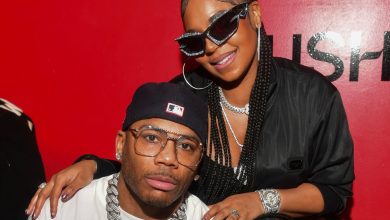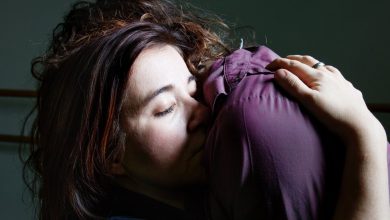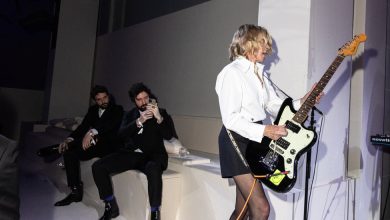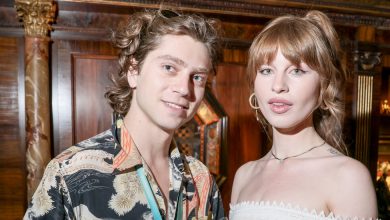The Mean Life of a ‘Midsize’ Model

In Paris last month, at the Chanel couture show, there was something about one model that set her apart from the others on the runway.
Strikingly beautiful, Jill Kortleve has almond-shaped eyes, dark bushy eyebrows and chiseled cheekbones. Since her runway debut for Alexander McQueen in 2018, she has appeared on many magazine covers, modeled in Versace, MaxMara and Jacquemus shows, and starred in advertising campaigns for Valentino Beauty and Fendi, to name but a few.
But what makes her an unusual star for the high fashion industry is not the fact that she is 29, making her older than many of her peers, or that she is 5-foot-8, making her shorter than many of them too. It is the fact that Ms. Kortleve is a U.S. size 8 to 10 — or “midsize” — as the middle ground between petite and plus size is increasingly known. “Straight” size, or under a U.S. size 2, remains, overwhelmingly, the fashion industry norm.
Plus-size models, typically those above a U.S. size 12, have become better represented in high fashion. “Curve” models like Paloma Elsesser, Precious Lee and Ashley Graham have thriving careers.
For years, however, Ms. Kortleve has been one of the only midsize models of note. In January, she was the only midsize model cast by Chanel for its couture show. There were a handful of others at shows like Valentino, but last season Ms. Kortleve was the only midsize model to be cast by the marquee names on the couture calendar.
Diversity on the runways (or the lack of it) has come under intense scrutiny in recent years. So at a time when midsize fashion is gaining momentum elsewhere — in mass market apparel branding and on TikTok, where the #midsize hashtag has more than four billion views — why is it still overlooked by the overlords of luxury fashion? And, in 2023, what does midsize — or average — sizing even mean?
‘Still the Only One’
Much of the data on the average dress size in key consumer markets is out of date. Widely cited statistics that suggest the average dress size worn by British and American women is a 16 are generally from studies published in 2016 or earlier.
How certain sizes translate into measurements has shifted over time and varies substantially from brand by brand and garment to garment, which is one of the reasons millions of women find it so hard to buy clothing that fits.
“It’s impossible to say with any real accuracy what the average clothing size is for a woman in the U.S.,” Renee Engeln, the director of the Body and Media Lab at Northwestern University, wrote in an email. She declined to pin down midsize or plus size with a specific range.
“The landscape of women’s fashion is inaccessible to many body types not because we don’t understand how big or small the ‘average woman’ is,” Dr. Engeln said. “It is because major players in the fashion industry still choose to exclude women whose bodies are inconsistent with the brand image they want to cultivate.”
Ms. Kortleve, who is Dutch and partly of Surinamese heritage, may be riding high now, but she had a distressing foray into modeling after she moved to Amsterdam at 18. She was determined to be a successful “straight” size model and a size 0. She struggled at both.
“I was dieting constantly, 24/7, trying so hard to conform to the industry standard,” Ms. Kortleve said in a freezing and windswept Amsterdam earlier this month. “I was antisocial, miserable and never ‘thin’ enough to get booked anyway, so it felt like I was starving myself for nothing.”



Jill Kortleve walked in, from left, the Chanel couture show in January in Paris and in the Nensi Dojaka and Alexander McQueen spring 2023 shows in London.Credit…From left, Chanel; Isidore Montag/GoRunway.com; Alexander McQueen
“I had this fixed idea in my head of how models had to look in order to be successful,” she continued as she sipped on a (non-diet) Coke. “My hips measured 92 centimeters, and that was still so far from good enough. For context, they measure 105 centimeters today. Finally I reached a breaking point mentally and physically. I had to walk away.”
Walking away meant a long trip to Bali and getting “SELF LOVE” tattooed on her hands before returning to modeling in 2018 at a more healthy weight — fortuitously at a time when wider depictions of beauty were emerging on high fashion runways. That September, she was booked, a virtual unknown, for an Alexander McQueen show. Thereafter, castings became more frequent until 2020, when headlines touted her as the first curve or plus-size model to walk at a Chanel show since Crystal Renn a full decade before.
Except Ms Kortleve was — and is — roughly a U.S. size 10. Which, outside the fashion industry, is very few people’s idea of plus.
“It is problematic, for sure,” Ms. Kortleve said. “I am clearly not a plus-size model, and putting me in that box takes away from the experiences that my plus-size peers have had, like not being able to find their size in a store, which is something I’ve never had at my size.”
“I don’t want to be put under any label or box, be it straight or midsize or plus size or anything else,” she added.
These days, Ms. Kortleve said, people want to look in magazines or on Instagram and feel represented, particularly younger consumers. “Brands know that casting someone of a more ordinary weight like me — what you keep calling midsize — helps them appear closer to achieving that for customers. Even if often I am still the only one of that size there.”
A Midsize Movement — or Moment?
Alexandra van Houtte, the chief executive of Tagwalk, a fashion search engine, noted that while her platform has reference tags for 83 curve models, only three midsize models currently exist on the Tagwalk database: Ms. Kortleve, Celina Ralph and, most recently, Ajok Daing.
During the last ready-to-wear season in September, Ms. van Houtte said, more than half of all fashion week shows still had no models who weren’t a dress size 0 or 2, perhaps not coincidentally at a time when ultrathin bodies appear to be back.
“Sadly, I feel like we have actually slipped backward on the runways in terms of size representation — especially in Europe,” said Kenya Hunt, the editor of Elle UK. After years of body positivity momentum, size inclusivity has stalled, in contrast to improved representation of race, as well as age and gender. Ultimately, these models can tick those diversity boxes while still being thin.
“If a model like Jill Kortleve keeps being presented to us as plus size, that alienates an entire group of women who are bigger than that,” Ms. Hunt said. “It’s embarrassing that an exclusionary mentality still underpins so much of this industry.”
But the ordinary has long been rejected by high fashion, a world that loves to shock through visual extremes. Bony ribs (ideally) or ripples of undulating flesh (occasionally) on a runway or campaign shoot somehow seem preferable to highlighting a body that’s reflective of a more “boring” middle ground. This may be a reason models with figures like Ms. Kortleve’s remain underrepresented.

“If I don’t walk, or say no to a show, are they going to book another midsize girl? Or just book the old standard size and slip backward again?”Credit…Melissa Schriek for The New York Times
“A lot of model casting during fashion week is feeling increasingly performative again,” said Mina White, an agent at IMG Models who added Ms. Kortleve to her roster last year. “Only one or even two curve or midsize models per show does not reflect meaningful change or true inclusivity. It’s tokenism, especially if any size diversity in front of the camera is still not translating into runway fashion in mid- or plus-sizing being available on the shop floor.”
Though it may be overlooked by the fashion mainstream, thousands of TikTok users who see themselves in the midsize category are creating content, including try-on hauls of midsize-friendly fashion brands and copycat outfits of luxury looks they aren’t able to buy. Others offer tips on how to dress to emphasize your best features and downplay the ones you feel less confident about; there are also discussions of the manipulative power of fatphobic marketing and how to rise above it.
And despite these uplifting notes, social media can, of course, offer a portal to “thinspiration” pages and toxic messaging. But Ms. Kortleve is encouraged to see young people call out body shaming and create their own body-positive movement if fashion isn’t going to give it to them.
“It makes me happy, honestly, and relieved,” she said. “I feel real responsibility to represent women with a body like mine in the fashion world, but there is such pressure, too. Like, if I don’t walk, or say no to a show, are they going to book another midsize girl? Or just book the old standard size and slip backward again?”
Both Ms. Kortleve and Ms. White, her agent, said better representation would be achieved only when sample sizing moves beyond the traditional size 0 and when all shoots and fittings have mid- and plus-size options, meaning that models from those categories can be booked. If pieces didn’t fit or look good, collections could be curated to meet a range of body shapes.
For now, mid- and plus-size models almost always have samples made for them: one-off creations that may make magazine covers or billboards but never go into production for women to buy. For Dr. Engeln of Northwestern, the absence of an industry infrastructure that allows larger models to succeed underscores the fact that brands are still committed to the idea that skinny models make them more money, even if the midsize movement on TikTok suggests a more far-reaching market.
“In media imagery, the link between money and thinness is undeniable,” she said.
The primary motivation of nearly any fashion brand is making money, she added, “not building a more inclusive industry. If they’re not using more than one midsize model, it’s because the brand doesn’t believe they will benefit from doing so.”



